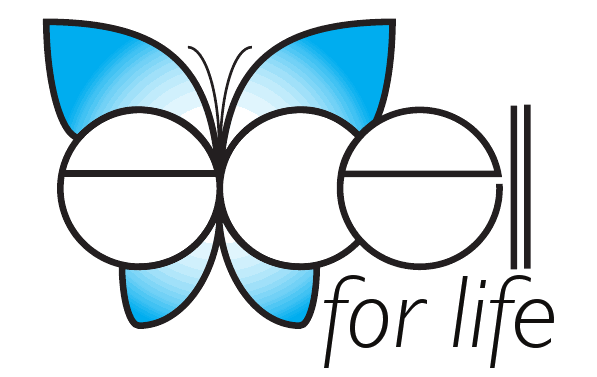About Type 1 & Type 2 Diabetes and . . . Racing?
Published: May 30, 2011
I’m on the fast track learning about what it’s like to live with diabetes!
Since my 10 year old Annika’s diagnosis on St. Patrick’s Day, I realized many people do not know there is a big difference between type 1 & type 2, and I have come to know a great man and race car driver Charlie Kimball.
Charlie also has type 1 diabetes, diagnosed in his mid twenties.
Annika and I were blessed to meet him several times this past week, and I heard him speak to a group of physicians.
Annika learned from this inspirational great man that she can do anything even with her type 1 diabetes, and that she can use this challenge to be a better woman.
He says that he has become a much better man since his diagnosis, and he celebrates is “Diabetesversary” each year, October 17th.
Charlie also treated her to a rare opportunity – learning all about his race car and sitting in it just a few days before the 500!…
Please pray for him and for God to continue to greatly use him with his type 1 diabetes to improve diabetes care and the world.
Type 1 Diabetes
This type equals 5-10% of all diabetes
Annika’s diabetes doctor Dan Pollom’s first words to her, “You are lucky. You have the good type of diabetes!” He says this because with good management by Annika, she will have a healthy life and normal lifespan. Dan has firsthand experience, because he was diagnosed with it at age 11.
Type 1 diabetes is a chronic lifelong medical condition that occurs when the pancreas produces little or no insulin, which results in high blood sugars (high blood glucose).
Insulin is a hormone that helps the body absorb and use glucose and other nutrients from food, store fat, and build up protein.
Type 1 diabetes usually begins in early childhood or young adulthood, but it can develop at any age. It is caused by an abnormal immune response in the body – making antibodies that destroy its own insulin-producing cells (called beta cells).
Symptoms of type 1 diabetes are commonly
weight loss
excessive thirst and urination
fatigue
blurry vision
Most people who develop this type of diabetes have no family history, and it is just sporadic (as in my Annika’s case). Close relatives (children, siblings) have an increased risk of developing type 1 diabetes compared to those with no family history (5-6% risk versus 0.4% risk).
Treatment of type 1 diabetes requires immediate and currently lifelong insulin injection and blood sugar monitoring.
Annika started with insulin pens injecting about 6 times a day, and checking her finger-stick blood sugar 8-10 times a day.
Just this week she got a very high tech insulin pump to inject her insulin at a constant rate through a catheter port in her abdomen (needing changed twice a week, but giving her much better blood sugar control and no more bruises from needle sticks).
She will also get a continuous glucose monitor, which is a catheter port at another site on her skin needing changed once a week (but eliminating most of the finger-sticks and giving even better blood sugar control).
Annika, Bruce, and I are daily thankful to God for her opportunity for great medical care. Because after our mission trip to Haiti, we are well aware that if she were a usual Haitian she would now be in Heaven (since the cost of type 1 diabetes care is in the thousands of dollars each year).
Type 2 Diabetes
This type equals about 90% of all diabetes and is alarmingly increasing!!!
Type 2 diabetes is a medical condition of multiple disruptions in the way the body uses glucose (sugar).
In many people it can be reversed and even cured by consistent lifestyle and diet changes!
Type 2 diabetes is characterized by high blood sugar, insulin resistance and inflammation (body does not use its insulin appropriately), and relative impairment in insulin secretion. The number of people with type 2 diabetes has risen alarmingly in the past 10-20 years, in large part due to increasing obesity and sedentary lifestyle.
There is a genetic predisposition in most people with type 2 diabetes that works along with the obesity and inactivity to bring out the diabetes. The lifetime risk of developing type 2 diabetes is 5-10 time higher in first degree relatives (sister, brother, son, daughter, mother, father) of a person with diabetes as compared to a person with no family history.
Symptoms of type 2 diabetes are similar to type 1 diabetes, with
increased thirst
frequency of urination
blurry vision
This type of diabetes is often accompanied by the medical conditions of hypertension and increased cholesterol, which with the diabetes condition dramatically increases the risk of heart attacks and strokes. In the past, most type 2 diabetes was diagnosed around middle age or older age. However with the serious increase in obesity, many children are now being diagnosed with early diabetes.
The diagnosis of type 2 diabetes is made if a person has a fasting blood sugar of 126 or higher, a random blood sugar of 200 or higher, or a HgA1c blood test of 6.5 or higher. Once a person has the diagnosis of type 2 diabetes, he or she is about as much as likely to have a heart attack or stroke as a person who has already had a heart attack or stroke…
Before a person is diagnosed with type 2 diabetes, he/she has impaired fasting glucose (also called hyperglycemia). About 11% of all people between the ages of 20-70 have this. Impaired fasting glucose is diagnosed by a fasting blood sugar of 100-125, a random blood sugar of 140-199, or a HgA1c blood test of 5.7-6.4. At least 50% of all people with impaired fasting glucose goes on to develop type 2 diabetes.
People with type 2 diabetes are very fortunate, because by losing weight and exercising daily many can be cured and become much healthier as well!
The mainstays of treatment of type 2 diabetes are weight loss (with a healthy lower carb diet – less bread, pasta, potatoes) and daily aerobic exercise of at least 30 minutes.
This 30 minute of aerobic exercise improves blood sugar as much as a diabetic medicine, and does even more with the many other benefits of exercise (see my Health Guide)!
I recommend monitoring blood sugar with a home glucometer about 1 – 3 times a day, depending upon the person’s blood sugars and level of control.
Sadly, most type 2 diabetics do not put the effort into weight loss and daily exercise. Then I need to start diabetic medicines. Usually generic Metformin is first, and then there are about 4 other classes of diabetic medicines. Once a type 2 diabetic gets to about 3 medicines and their HgA1c blood level is above 7, then I need to start insulin.
Lower Your Risk of Type 2 Diabetes NOW
Eat healthier, exercise daily, & get to your best weight – and FEEL MUCH BETTER! My next article will discuss the basics of a healthy diet, and the needed portions of fiber, carbs, protein, fat, and calories.
Our team of Excell For Life are here to help you!
You can do it, and my prayers always for you!
Dr. Lisa



